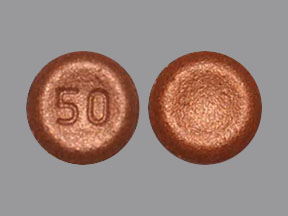Xadago and Alcohol/Food Interactions
There are 3 alcohol/food/lifestyle interactions with Xadago (safinamide).
Alcohol (Ethanol) Safinamide
Moderate Drug Interaction
Using safinamide together with ethanol may increase side effects such as dizziness, drowsiness, confusion, and difficulty concentrating. Some people may also experience impairment in thinking, judgment, and motor coordination. You should avoid or limit the use of alcohol while being treated with safinamide. Do not use more than the recommended dose of safinamide, and avoid driving, operating machinery, or engaging in potentially hazardous activities requiring mental alertness and motor coordination until you know how the medication affects you. Talk to your doctor if you have any questions or concerns. It is important to tell your doctor about all other medications you use, including vitamins and herbs. Do not stop using any medications without first talking to your doctor.
Safinamide Food
Moderate Food Interaction
Safinamide may be taken with or without food. While there is no need to strictly avoid most foods and beverages that contain tyramine (usually aged, fermented, cured, smoked, or pickled foods such as air-dried and fermented meats or fish, aged cheeses, most soybean products, yeast extracts, red wine, beer, and sauerkraut) during treatment with safinamide, certain foods such as some of the aged cheeses (for example, Boursault, Liederkrantz, Mycella, and Stilton) and pickled herring may contain very high amounts of tyramine and should generally be avoided if possible. Consumption of very high levels of tyramine (greater than 150 mg) while on safinamide treatment may lead to dangerous increases in your blood pressure, a condition known as hypertensive crisis. Talk to your doctor or pharmacist if you are uncertain about what foods, if any, to avoid. You should seek immediate medical attention if you experience sudden and severe headache, blurred vision, confusion, seizures, chest pain, nausea or vomiting, sudden numbness or weakness (especially on one side of the body), speech difficulties, fever, sweating, lightheadedness, and/or fainting during treatment with safinamide, as these may be signs and symptoms of a hypertensive crisis. Do not take larger doses or use the medication more frequently than prescribed. It is important to tell your doctor about all other medications you use, including vitamins and herbs. Do not stop using any medications without first talking to your doctor.
Safinamide High Blood Pressure (Hypertension)
Moderate Potential Hazard, Moderate plausibility
safinamide - hypertension
Safinamide may cause hypertension or exacerbate existing hypertension. Patients should be monitored for new onset hypertension or hypertension that is not adequately controlled after starting treatment. Dosage adjustment may be necessary if elevation of blood pressure is sustained.
References
- (2017) "Product Information. Xadago (safinamide)." US WorldMeds LLC
Xadago drug interactions
There are 481 drug interactions with Xadago (safinamide).
Xadago disease interactions
There are 5 disease interactions with Xadago (safinamide) which include:
More about Xadago (safinamide)
- Xadago consumer information
- Check interactions
- Compare alternatives
- Pricing & coupons
- Reviews (4)
- Drug images
- Side effects
- Dosage information
- During pregnancy
- FDA approval history
- Drug class: dopaminergic antiparkinsonism agents
- Breastfeeding
- En español
Related treatment guides
Drug Interaction Classification
| Highly clinically significant. Avoid combinations; the risk of the interaction outweighs the benefit. | |
| Moderately clinically significant. Usually avoid combinations; use it only under special circumstances. | |
| Minimally clinically significant. Minimize risk; assess risk and consider an alternative drug, take steps to circumvent the interaction risk and/or institute a monitoring plan. | |
| No interaction information available. |
Further information
Always consult your healthcare provider to ensure the information displayed on this page applies to your personal circumstances.


